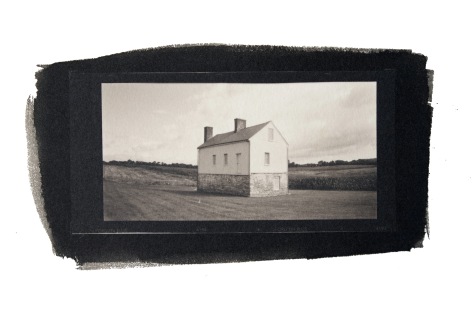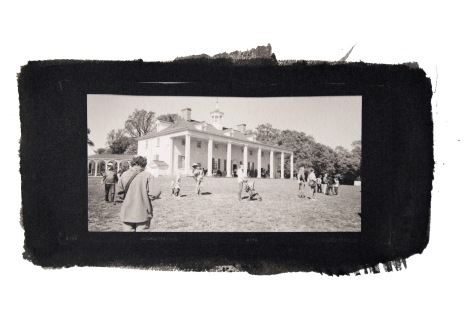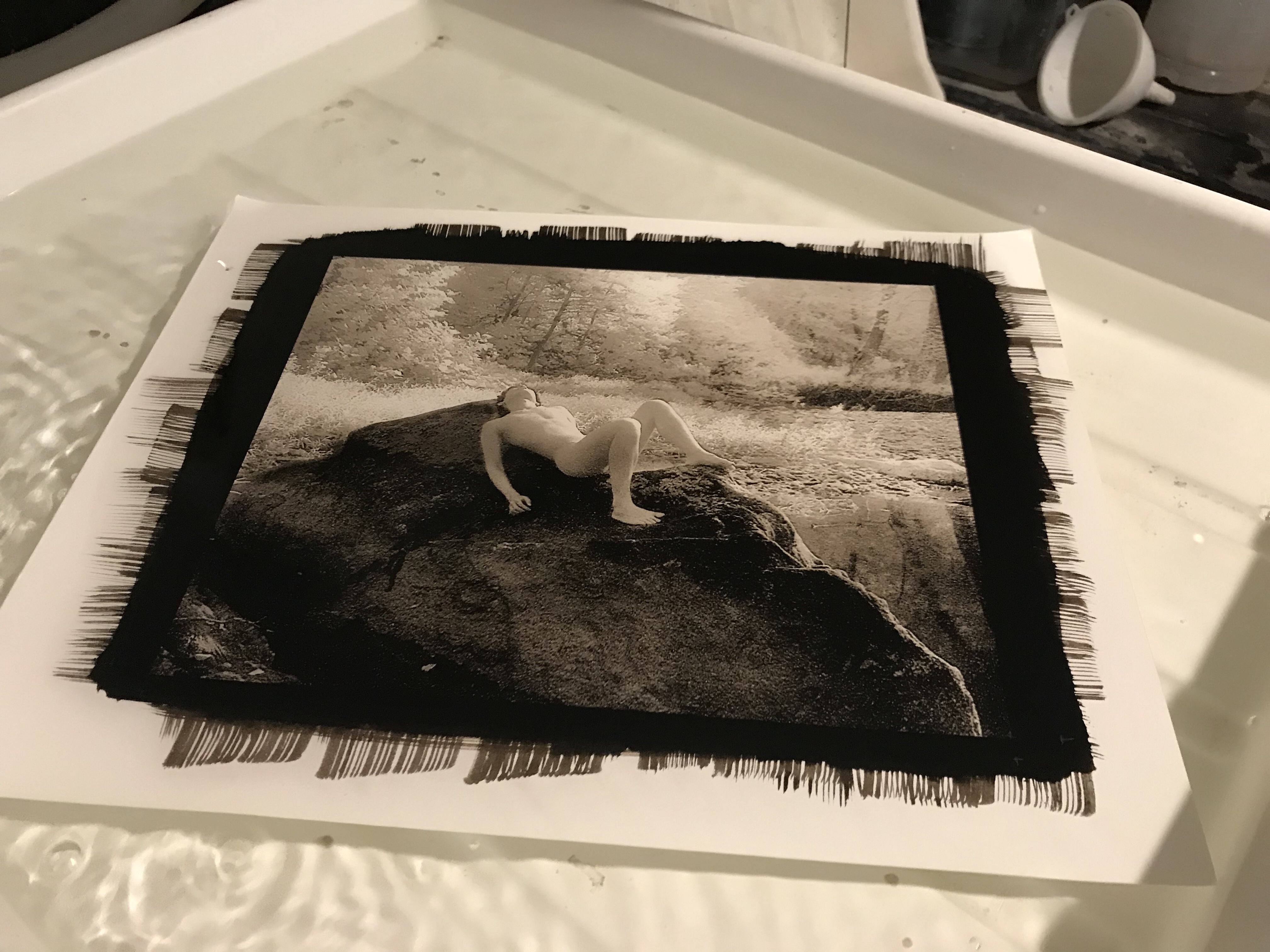For many people, getting a gallery show is the holy grail of their artistic ambitions. Even though the art world is undergoing a major transformation with relationship to brick-and-mortar galleries, many people still see getting a gallery show as a mark of accomplishment (and it is – it means that someone who has money invested in an exhibition space is willing to commit their time, energy, reputation, and cash to showing and marketing YOUR work). Having achieved this, I’d like to pass on some salient advice for anyone still struggling to get there.
HAVE AN IDEA
Before you ever begin to look for a gallery show, have a rock-solid concept about your work. You can take all the pretty pictures in the world, but if you don’t have some idea, some message behind your work, then you probably won’t get very far. I’m not saying that your concept/message must be a social/political/intellectual/academic one, but it should be more than just “they’re all photos of Yosemite because I think it’s pretty”.
ARTICULATE THAT IDEA
Develop your elevator pitch – if you need help writing it, find someone you know who is a good writer to come up with a couple of sentences that encapsulate what your work is about, and then practice delivering it to your friends and family until you are able to rattle it off with confidence.
In my case, it was:
Sinister Idyll: Historical Slavery in the Modern Landscape is a visual narrative of the physical evidence of the slave-holding past in and around the nation’s capital. The work consists of 2 1/4 inch by 4 1/4 inch palladium prints that, by virtue of their size, force the viewer into an uncomfortable intimacy with images that are both familiar and unknown.
That was the hook to pull the interest of the gallerist. After that, I had the attention of the gallery owner, and was able to tell the story of how I got started on my series, what was my motivation, and all the other bits about the work that made it worth showing.
NETWORKING
Go to art openings – lots of them. Go see different galleries and keep track of the kinds of work they show. Get to know other artists and talk to them about their work, especially artists whose work you identify with. Get them to introduce you to the gallery owners – having a personal introduction from someone the gallerist already knows and works with is a big leg up in getting your work in front of them.
GALLERY OWNERS
At the openings, go talk to the gallery owners. Don’t be afraid to identify yourself as another artist looking to show your work, but don’t introduce yourself that way if you’re meeting them cold. Engage them in conversation – ask them about the show, how they chose the work to include, and so on. When they turn to you and ask you about who you are, then tell them, “I’m Bob Jones (or whatever your name is) and I’m a photographer. I’ve been working on a series about xyz for the last three years”. Have your elevator pitch ready to go – if they’re interested, they’ll ask, and you can give them your confident, practiced hook. Have a few images of your work on your phone, at the top of your phone’s gallery, so they’re ready to show, if the gallerist asks to see some. If they don’t, don’t whip out the phone and start showing them anyway.
ETIQUETTE
If the owner is interested, ask what their process for viewing new work is – maybe they have portfolio drop-offs once a month, maybe they schedule appointments, maybe it’s an online process. Whatever it is, FOLLOW THEIR PROCESS. Nothing will piss off a gallery owner more than someone ignoring what they consider to be the most basic of basic rules. They will see it at best as a waste of their time, and you’ll likely never get your work reviewed by them, and there won’t be a second chance.
If they look at your work, and they like it but don’t have a space to show it soon, don’t take this as a no. Say thank you, let them know you appreciated their time, and listen to any advice they might dispense. Get their business card before you leave. When you get home, that same day, or next day at the latest, send them a thank you email, and find out if they would be interested in getting future communication from you about your work. If they say yes, do send them links and announcements about new bodies of work you’re doing. Do it often enough they won’t forget you, but not more than say 3-4 times a year so you aren’t a pest. Don’t send them announcements about every time you get a photo hung in a cafe somewhere, but do let them know if you get a major show or you get a write-up in a serious publication like a national newspaper or art magazine.
SELF-PROMOTION
A lot of this stuff above falls under the umbrella of self-promotion. It’s a practice, not a one-time event. You’ve got to kiss LOTS of frogs to find a prince, so if this doesn’t lead to a solo show the first time you try, don’t give up. Lather, rinse, repeat.
DON’T BE A DIVA
Unless your last name is Mapplethorpe, Avedon, or Liebowitz, you can’t get away with being a diva. So don’t even try. Your goal (I assume) is to get invited back to show again. Producing a show, even a solo show, is a collaborative effort. The gallerist will know their space and have a pretty clear idea of how to hang your work in their space to be most effective. Listen to them. You can politely disagree and discuss their ideas, of course, but don’t take a “my way or the highway” approach to hanging the show. If you pull a stunt and say, “I’m not doing this unless…”, it had better damn well be a hill you want to die on. “Doing that would compromise my artistic vision” is 99% of the time a bullshit excuse. Be willing to share a wall. Be willing to have your pictures arranged in a way you hadn’t thought of. Don’t insist that “if this picture isn’t in the show, I’m not doing the show”. The gallery owner will remember if you’re a temperamental diva, and they won’t want to work with you again. The art gallery world is small – word gets around and if you’re a diva, more doors will close than open.






























 I’ve got a class coming up soon – Thursday evenings starting September 27, co-taught with Mac Cosgrove-Davies. It’s an alternative process survey course, covering platinum/palladium, gum bichromate and cyanotype. We will be starting out by going through the process of making digital negatives for the platinum/palladium process, and then printing using platinum/palladium. I will be walking students through the process of how to create your own correction curve so that they will have the tools handy for making appropriate correction curves for their own personal environments and for whatever process(es) they want to work in. We will cover basic techniques, preferred materials and digital hardware.
I’ve got a class coming up soon – Thursday evenings starting September 27, co-taught with Mac Cosgrove-Davies. It’s an alternative process survey course, covering platinum/palladium, gum bichromate and cyanotype. We will be starting out by going through the process of making digital negatives for the platinum/palladium process, and then printing using platinum/palladium. I will be walking students through the process of how to create your own correction curve so that they will have the tools handy for making appropriate correction curves for their own personal environments and for whatever process(es) they want to work in. We will cover basic techniques, preferred materials and digital hardware.













